John Gilbert Graham fought to hold down the contents of his stomach when he heard that an airliner out of Denver's Stapleton Airfield had crashed shortly after takeoff on the night of November 2, 1955. No one, however, had to tell Graham that the plane was United Airlines Flight 629 bound for Anchorage, or that his mother Daisie King was on the doomed DC-9. He knew this before anyone because he had carefully loaded his mother's suitcase with 25 sticks of dynamite and rigged the explosives to detonate 20 minutes after takeoff.
The explosion that brought down United 629, killing all 44 passengers and crew, was witnessed by farm families in the Longmont area who heard a blast followed by a rain of fiery debris falling from the sky. When they arrived to help search for survivors, they were subjected to gruesome tableaux of Graham's handiwork. What they didn't know was that the explosion was a scheme to collect life insurance money by a hapless criminal and Colorado's newly-crowned worst mass-murderer.
Not surprisingly, the bombing of Flight 629, also known as "the Mainliner", was huge news in Colorado and across the country. The subsequent investigation and Graham's trial set the stage for modern airline disaster investigations and copycat crimes, and even planted the roots of CourtTV.
The Scene of the Crime
Both eyewitnesses and investigators immediately suspected foul play in the downing of the Mainliner. Those would-be rescuers noticed the distinct odor of dynamite throughout the wreckage and investigators pointed out that some of the bigger pieces of the plane appeared to have dropped directly from the sky and sunk deep into the earth.
Though much of the debris was centered in an area near Longmont, the entire debris field stretched out over a 15-mile range.
Investigators from a range of agencies including the FBI, FAA, Civil Air Patrol, United States Postal Service (UAL 629 was carrying US mail bound for Alaska), and United Airlines combed the wreckage and came up with an interesting clue. Every known suitcase on the flight was recovered, most in remarkably good condition as the explosion occurred near the front of the plane. All the suitcases—except the one belonging to Mrs. King.
Upon further investigation, authorities found that King's son John had been convicted of several crimes, including stealing blank checks from an employer and running bootleg liquor. FBI Director J. Edgar Hoover ordered agents to "focus on him" after learning this information. Authorities were also intrigued by the fact that Graham had purchased several life insurance policies on his mother at the airport totaling more than $50,000, about $350,000 in 2020 dollars. (In mid-century America, life insurance vending machines, where a policy could be purchased for as little as $0.25 were common features at airports of all sizes.)
Graham was on the FBI's radar and his days as a free man were drawing rapidly to a close.
Who was John Gilbert Graham?
John Gilbert Graham was a 23-year-old husband and father of two who worked at his mother's drive-in-restaurant, the Crown-A, at 581 S. Federal Blvd., and at a Hertz Rental Car garage. He lived at 2650 W. Mississippi in a home purchased by his mother and was known to be moody and somewhat erratic.
Though nothing in his life justified the murder of 44 people, Graham's upbringing had been anything but idyllic. His biological father, William, had passed away when he was only three-years-old, though his parents had separated when he was just 18-months-old. After the separation, Graham was raised by his grandmother, though Mrs. King remarried a well-to-do rancher. When Graham was nine, his grandmother died and he was sent to the Clayton College for Boys.
Clayton College was a relatively progressive orphanage that allowed the boys a fair amount of physical freedom. But most little boys need their mothers and Graham was no exception. He felt utterly abandoned by his mother and, according to Eleven Minutes: The Sabotage of Flight 629 by Edward C. Davenport, Graham felt he'd been sent to Clayton because his mother didn't love him.
Graham's feelings of abandonment were, no doubt, exacerbated by the fact that he spent school holidays on his stepfather's ranch, but was forced to return to the orphanage when the breaks were over.
When Graham was 13, he was taken in by one of his stepfather's neighbors and lived there for a short time. Like so many other episodes in his short life, it just didn't work out and he was eventually allowed to live on the ranch with his mother.
From then on, Graham's life was one botched scheme after the next.
This phase included a brief stint in the Coast Guard and a never-ending cycle of entry-level employment and brushes with the law. Throughout, Graham maintained a complicated relationship with his mother. She bailed him out of multiple legal problems, always ready to pay restitution and keep his jail sentences minimized. As Graham grew older and, sort of, settled down, she purchased him a house and hired him to manage her restaurant.
Davenport points out that Mrs. King's love was anything but unconditional and he was always left feeling resentful that her love wasn't real.
A Rocky Mountain News article from April 1956 quoted a friend of Daisy’s describing the mother-son-duo saying, "Jack was her favorite. She took his word as law and gave him a lot of things. I suppose Daisie was a little neurotic."
For his part, Graham made his mother's life difficult by exploding at restaurant employees and continuing to engage in dubious activities. On Labor Day weekend in 1955, a mysterious explosion nearly leveled the Crown-A and Graham was the main suspect. Though nothing was ever proved, he would eventually take credit for attempting to blow up the place as part of an insurance fraud scheme.
One person who truly seemed to love Graham unconditionally was his wife Gloria, who he met during a failed stint at Denver University. Gloria stood by Graham right up until the bitter end and is portrayed as an innocent and sympathetic character in nearly every account of the UAL 639 tragedy. And Gloria was with him the night the FBI's trap sprung shut on her husband.
The Confession
On Sunday, November 13, FBI agents invited the Grahams to the Federal Building on Stout Street, ostensibly, to identify the charred pieces of Mrs. King's luggage and to clear up some details pertaining to the case. Over the course of the next 12 hours, FBI agents would press Graham on subjects ranging from the life insurance policies to his interactions with his mother's suitcase.
Authorities knew that Graham had tampered with his mother's suitcase because a suspicious neighbor had told them he had mentioned that he was going to sneak a Christmas present into her luggage. Daisy was a hobbyist who made costume jewelry and her son had allegedly purchased a jewelry making tool for her. In Graham's version of the story, he put the tool in the luggage and secured the bag - a locally-made Samsonite with a broken hinge - with straps he'd purchased at a local surplus store.
Of course, there was no jewelry tool, only 25 sticks of dynamite and a few blasting caps on a 20-minute timer. Graham knew that and the FBI suspected as much.
Graham was wearing his Sunday best when he arrived at the old customs house around noon on Sunday. Given that he was actually coming from church services, this wasn't entirely shocking.
Agents were never really convinced of Graham's stories about his mother's suitcase and became less convinced the more they questioned him.
At around 6:30 p.m., agents informed Graham that he was a suspect in the bombing and that he was both free to go and to call an attorney (this was before Miranda Rights). Graham was nothing if not cocksure and continued to press his made-up stories to the Feds. At around midnight, Agent James R. Wagoner said, "You've been lying to us all night. We are going to charge you with this crime. Why not make it easy for us?"
"Where do you want me to start?" he replied.
With that, Graham unspooled his plot to cash in on his mother's death and be rid of her once and for all saying, "I watched her go off for the last time. I felt happier than I ever felt in my life." The other 43 people on the plane were barely an afterthought for Graham. His one regret was that a 10-minute delay had caused the plane to explode over open farmland. In his original plan, the device would detonate over more mountainous terrain, which would have made finding evidence difficult to impossible for investigators.
As it was, investigators were finding piles of evidence against Graham after an investigation that was incredibly thorough and utilized state-of-the-art investigative techniques that are still the mainstays of contemporary air disaster investigations.
The Case Against James Graham
With Graham's confession in hand, the prosecution's case seemed open-and-shut, but that was simply too good to be true. Four days after taking credit for the bombing, Graham recanted his confession in an interview that appeared in the Rocky Mountain News under the headline, "DYNAMITER CHANGES HIS STORY." He was charged with the murder of his mother. Federal charges with regards to the destruction of the plane, the kind that would likely be leveled today, had not yet been written. Suffice to say, if Graham had pulled off this crime today, he would have faced dozens of charges.
But, through the course of the investigation, prosecutors amassed plenty of evidence against Graham. Despite his own presumptions, Graham was not a particularly skillful criminal. For starters, his own criminal actions, hair-trigger temper, and braggadocio were more than enough to help seal his fate.
Graham's change of heart also included an attempt at clearing himself by reason of insanity. After a botched suicide attempt, he was taken to the State Hospital in Pueblo where doctors found him to be in good enough mental condition to stand trial.
With a trial date set for April 16, 1956, Denver braced itself for what would be one of its most sensational criminal trials ever.
At trial, prosecutors brought forth witnesses who recalled Graham purchasing dynamite and blasting caps (which were cheap and easy to obtain in the 1950s), and were able to pick him out of a lineup. They also produced witnesses who attested to Graham's mechanical skills and prior experience with dynamite. They also linked wire used in the bomb to wire found in Graham's home.
After the crash, Graham told neighbors that he was upset that his mother died without ever seeing the surprise Christmas gift he'd spirited into her luggage. And because Graham was so specific about exactly what kind of gift (the jewelry drill) investigators had no problem finding the only places in the Denver-Metro area that sold them—and proving that Graham didn't actually purchase one. And his mentions of "premonitions" of his mother's death as early as November 3, 1955, didn't help his case either.
Over the course of the 15-day trial, prosecutors meticulously laid out a case that established the cause of the crash as a non-mechanical explosion. To bolster their point, they brought the judge and jury to a massive hangar near Stapleton Airfield where the Mainliner had been meticulously reconstructed. Though this type of reconstruction had been used to investigate other air disasters, this was one of the largest reconstructions done up to that point in time.
The case against Graham was amplified in a way that no other suspected criminal had experienced to that point because of a new spectator in the courtroom: television cameras. The State of Colorado v. John Gilbert Graham was the first trial in U.S. history where television cameras were allowed to record the proceedings. Court activities were not broadcast live and any participant who preferred not to appear on camera could opt out. The judge had a remote button that allowed him to turn the cameras off and on as necessary. Only one person opted out of TV coverage: the defendant.
On May 5, after hearing 80 witnesses and examining 174 pieces of evidence, the jury in the Mainliner case was left to render their verdict. In just over an hour they came back with a guilty verdict and a recommendation of death for John Gilbert Graham. Though his attorneys advised otherwise, Graham waived all his appeals and on May 15, Graham was sent to Colorado's Death Row in Canon City. Against his wishes, Graham's legal teams filed motions to halt his date with the gas chamber. These proceedings stretched on until October of 1956 when the Colorado Supreme Court upheld Graham's death sentence. His execution date was set for the week of January 12, 1957.
Death Row and Beyond
Graham adapted to life at the Old Max relatively well and was pleased to have a larger cell than he'd had in Denver. While on death row he mostly kept to himself and never really expressed any sort of remorse for the crimes he'd committed.
Life behind bars didn't strengthen his religious convictions, which seemed pretty perfunctory to the casual observer. On October 7, 1956, the Denver Post reported that when a fellow inmate tried pushing religious tracts on the young killer, Graham replied flatly, "What do I need with that kind of stuff where I'm going? It won't do me any good in hell."
Right up until the end Graham denied killing his mother, though he would admit building the bomb.
Graham eschewed any special requests for his last meal, but prison officials brought him steak, fried potatoes, tossed salad, fruit cocktail and ice cream anyway. Only the ice cream was eaten. Graham did, however, jokingly invite a Denver Post reporter who had covered his trial to sit on his lap during the execution as one of his last requests.
Warden Harry Tinsley, who unsuccessfully lobbied for executions to be broadcast live on the radio, strapped Graham into the chair in the gas chamber. "God bless," he told the doomed young man who replied, "thank you." A few minutes later, Graham joined his victims in the hereafter, becoming the 96th person to die under the Colorado death penalty. His newly widowed wife was not in Canon City for the execution.
In a bit of the brand of irony that frequently accompanies atrocity, Graham was able to convert his own death into insurance money. As part of a complicated bit of litigation with his mother's estate and the insurance company that underwrote the policy he'd purchased at the airport, Graham's widow was able to cash in on a $10,000 (about $93,000 in 2020 dollars) policy on his passing. Under the terms of the deal, the insurance company and King estate paid off a $500 premium on a separate policy on Graham's life that his indigent widow was unable to pay on her own in exchange for relinquishing any claims on the estate or other policies.
Graham's life was short but the aftermath of his crimes has reverberated considerably. The Mainliner bombing sparked a wave of insurance-motivated airline bombings, though none as deadly as Graham's. In July 1957, the U.S. Congress passed an act making airline and bus bombings a federal crime. TV cameras are now routine fixtures in courtrooms across the country and have been ever since Graham's trial.
According to Davenport, Graham's ashes were spread at Fairmount Cemetery near the spot where his mother was interred.

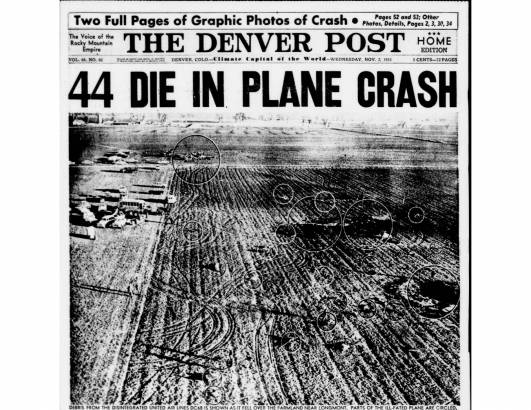
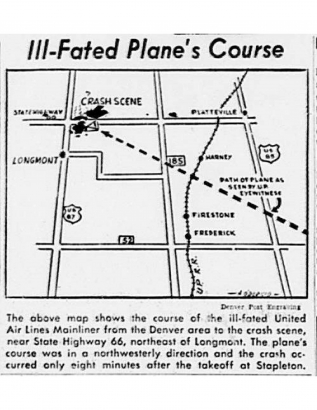
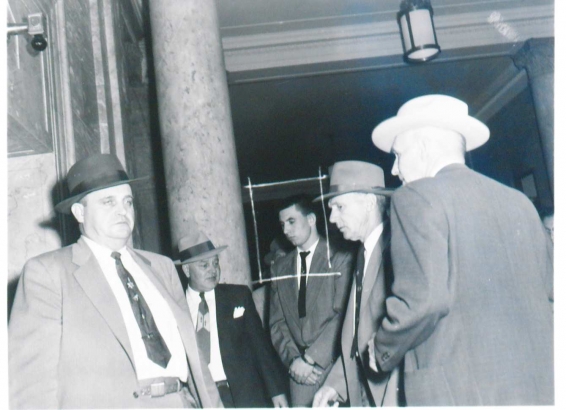
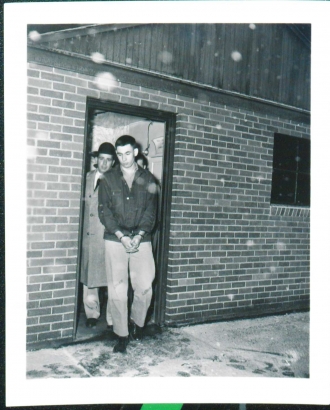

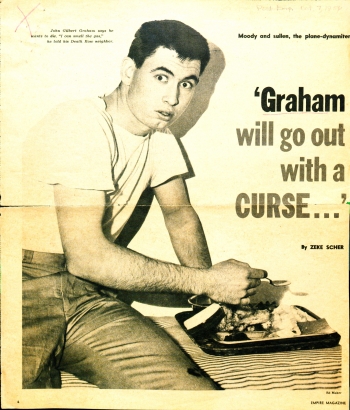
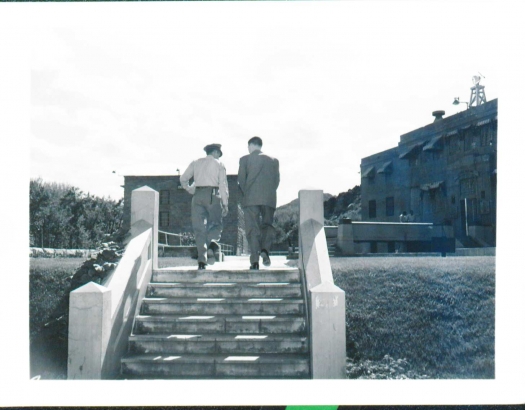
Comments
You may want to correct this
You may want to correct this article. The aircraft that was blown up was a DC-6B, a four engine, propeller-driven aircraft. Not a DC-9 as the article states. The DC-9, a twin-engine, jet-propelled aircraft, didn't fly until 1965.
Thanks, David!
Thanks, David!
The date was November 1st,…
The date was November 1st, 1955, not November 2nd. The plane was flying to Portland and Seattle, not Anchorage. Daisy King was going to Anchorage, but she would change planes in Seattle.
I was a college student in
I was a college student in the area at the time. Some of my friends went to see the wreckage the night it happened and regretted having gone to the scene. The story took up the front pages of the Denver Post and Rocky Mountain News for months. I will never forget the headline in the Rocky Mountain News the day after Graham was executed. It took up the entire front page with three-inch letters saying:
"DEATH TO
JOHN GILBERT
GRAHAM !"
My dad Lee Hall was the pilot
My dad Lee Hall was the pilot it wasn’t his night to fly a Pilot’s friend daughter was sick so my dad took his flight my mom went to the trial and sat only feet away from John I was only four years later my brother was killed by a drunk driver and dragged down
the freeway my mom was the strongest person I’ve ever known she would say to me Susie with JESUS you can do anything
Hi Sue - Thank you for
Hi Sue - Thank you for sharing that memory with us.
AMEN! I totally agree with…
AMEN! I totally agree with your Mom. Losing your spouse of many years is absolutely devastating. “I can do All Things Through Christ Who Strengthens Me”. Losing your child is not supposed to be the order of things. I remember when my brother was murdered at age 36 (with a wife and 2 young sons.) I can still hear my Dad crying that this is not the order of things & children should bury their parents, not parents bury their children. I was remembering my birth father’s cries while my TRUE Father in Heaven steadied me when my baby girl went home to JESUS. ( 24 yrs. old) Your Mom knows, just as I do, that we will be reunited again. Praise Jesus! Glory Be To God! 😇🙏🏼
Sue, I’m very sorry for your
Sue, I’m very sorry for your losses.
Brian,enjoyed this article,
Brian,enjoyed this article, great work!BTW,are you related to Dick Trembath,an Omaha reporter who covered the Starkweather crime spree a few years after Graham's cowardly bombing of the UAL flight?
Hi Jim - Thanks for the kind
Hi Jim - Thanks for the kind words! No relation but it was amazing what a national story that was.
Add new comment